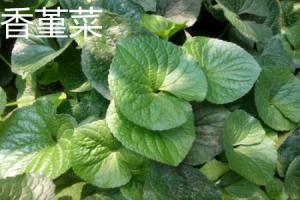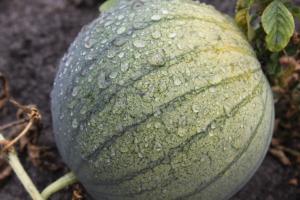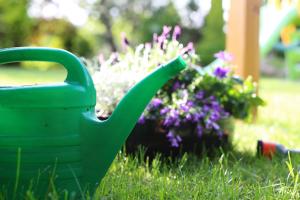1、 Clivia
1. Lack of phosphorus and potassium fertilizer
Phosphorus and potassium can promote the differentiation of flower buds, while nitrogen fertilizer can promote the growth of Clivia leaves
Solution:
Before the flowering of Clivia, we should apply more phosphorus and potassium fertilizer, such as potassium dihydrogen phosphate, fully decomposed fish and shrimp shell, fish intestines water, egg shell, bone meal and so on
Once every 7 ~ 10 days, pay attention to thin fertilizer and frequent application
2. Insufficient light
Clivia can't be exposed to the sun. Maybe many flower friends will put Clivia in a relatively shady place. Clivia can't be exposed to enough light and photosynthesis is weakened. Naturally, there is no way to provide more nutrients for it to differentiate flower buds~
Solution:
It's best to put Clivia on the Nanyang platform separated by glass and turn the flowerpot every 1, otherwise the leaves of Clivia are easy to grow and skew

2、 Longevity flower
1. Insufficient light
Longevity flowers like light. Only when there is enough light can they grow well. If there is insufficient light, the branches and leaves will grow in vain and the branches will be thin. It's strange that they can grow buds
Solution:
Put longevity flowers on nanyangtai or South windowsill, which is a place with very good light~
2. Insufficient fertilizer
The flowering period of Changshou flower is very long. It can bloom many times a year, which means that there is a great demand for fertilizer. Therefore, it is a very mysterious thing not to fertilize Changshou flower and want it to burst into pots~
Solution:
Now it is just the flower bud differentiation period of Changshou flower. It needs fully decomposed fish intestines and water once a week, with a ratio of 1:50. If you want quick effect, you can directly spray potassium dihydrogen phosphate, which is very effective

3、 Triangle plum
1. Watering problem
Triangle plum likes a humid environment, so generally, the flower friends who breed triangle plum will water more, but if they keep a humid environment all the time, it is easy to cause the consequence that triangle plum grows long and leaves do not bloom
Solution:
Control the water, water once in 15 ~ 20 days, and bask more in the sun at the same time, so that the triangle plum has a sense of crisis. If it is circulated for 2 ~ 3 times, the triangle plum will have flower buds
2. Insufficient light
Some flower friends breed triangular plum indoors. It may not be placed in a very appropriate position and the light is not enough, so triangular plum will not bloom
Solution:
It's best to breed trigonometry plum in the open air. The better the light is, the more flowers bloom. If there is no open air condition, please be sure to put it on Nanyang terrace with very good light. Thank you
3. Branches are too dense
It's easy for Prunus triangularis to produce lateral branches, and many flower friends are reluctant to cut them off, but in fact, these branches will disperse nutrition, resulting in difficult flower buds on the branches
Solution:
Every spring, we should reduce the weak branches, sick branches and overgrown branches to reduce the consumption of nutrients, and cut off the pedicels after flowering

4、 Crab claw orchid
1. The temperature is too low
The suitable growth temperature of crab claw orchid is above 15 ℃, but its flowering period is from October to next February. During this period, the temperature is relatively low. If the indoor temperature cannot reach above 15 ℃, it will be difficult to breed flower buds
Solution:
The crab claw orchid is cultured indoors
If the indoor temperature is less than 15 ℃ in winter, you can use plastic bags to make a small greenhouse for crab claw orchid
2. Always moving around
Some flower friends will move it around in order to let the crab claw orchid have enough light. Unexpectedly, this is the culprit that causes the crab claw orchid not to bloom! And the crab claw orchid with flower buds will also drop buds
Solution:
Put the crab claw orchid on the Nanyang platform across the glass~

5、 Rose
1. Not pruned in time
Roses grow very fast. In the process of growth, they grow a lot of lateral branches, horizontal branches and so on. This kind of branches will disperse nutrients, resulting in insufficient nutrients on each branch to differentiate flower buds
Solution:
Cut off the long branches, weak branches, dry branches, sick branches and post flower branches of roses
2. Lack of fertilizer
Flowering is a very nutrient consuming thing for roses. If you can't supplement fertilizer in time, roses can't accumulate enough nutrition, of course, they can't bloom~
Solution:
Generally, it is necessary to apply fully decomposed thin cake fertilizer once every 10 days, and once a week in the peak growth season of rose~

6、 Camellia
1. The temperature is too low
Camellia can produce flower buds only at a temperature of about 10 ~ 15 degrees. If the temperature is not reached, the flower buds cannot be bred, or the flower buds are bred. As a result, as soon as the temperature decreases, they all fall off
Solution:
In winter, keep the camellia indoors and in nanyangtai and other places. Don't move it casually. If you always move it, the camellia will die
2. Insufficient humidity and ventilation
Camellia likes a humid environment. When breeding, it's best to spray water on the leaves of Camellia every day to increase the air humidity. At the same time, open windows every day for ventilation. If it is always stuffy, it will also cause buds to fall~

7、 Jasmine
1. Insufficient light
Jasmine doesn't like light. If it doesn't like light, jasmine buds can't blossom naturally
Solution:
If you have conditions, you can raise it in the open. If you have no conditions, you can put it on the Nanyang platform. You must have sufficient light
2. Alkaline soil
Jasmine is a southern flower and likes slightly acidic soil. Northern flower friends may ignore this when maintaining it. Unexpectedly, this is the reason why Jasmine doesn't bloom in your house
Solution:
When watering each time, add 1 ~ 2 drops of vinegar or use ferrous sulfate for root irrigation. The ratio is 1:1000, about once a week

8、 Chrysanthemum
1. Too much light
Chrysanthemum is a plant with short sunshine. If the sunshine time is too long every day, the flower buds of chrysanthemum will not differentiate, and the light is also light, which will also be affected
Solution:
If the house is very bright at night, it's best to close a small black house for chrysanthemum, or directly raise it in the open
2. Insufficient fertilizer
Flowering needs to consume nutrition. If you want to bloom well without fertilization, it's not so easy in the world~
Solution:
After the beginning of autumn, apply thin bone paste residue water once a week. When it is in bud, add potassium dihydrogen phosphate solution once, with a ratio of 1:1000, and the flowers will be more gorgeous~

9、 Osmanthus fragrans
1. Not enough time
Osmanthus fragrans planted and propagated can bloom in about 10 years; Osmanthus fragrans propagated by grafting, layering and branching usually blooms the next year; Osmanthus fragrans cuttings, usually 4 years before flowering
Solution:
So think about how your sweet scented osmanthus is propagated. If it is cuttage, wait for 4 years first~
2. Insufficient fertilizer
Without nutrients, Osmanthus fragrans is powerless to blossom, so dear flower friends, we must fertilize Osmanthus fragrans
Solution:
Sweet scented osmanthus likes pig manure. Fertilization will begin in spring. From April to may, it will be applied once in 10-15 days, from June to July, once in 7-10 days, and the last time in early August. Generally, Osmanthus fragrans can produce large clusters of flowers
In general, there is no pig manure in cities. You can use rotten cake fertilizer instead. If you can get pig manure, it is recommended to use pig manure first
3. Unsuitable soil
Osmanthus fragrans also like slightly acidic soil. If the basin soil is too alkaline, it will affect the normal growth of Osmanthus fragrans, not to mention flowering~
Solution:
Generally, potted plants can be configured with rotten leaf soil + sandy loam in the ratio of 1:1. You can also add 2 ~ 3 drops of vinegar or ferrous sulfate when watering~

10、 Rhododendron
1. Lack of phosphorus and potassium fertilizer
The main reason why rhododendrons do not bloom is the lack of phosphorus and potassium fertilizer, which is the main force to promote the formation of flower buds
Solution:
In the flower bud differentiation stage, timely supplement phosphorus and potassium fertilizer, such as plant ash (containing potassium fertilizer), eggshell (phosphorus fertilizer), rotten animal bone (phosphorus fertilizer), and so on. Bury an appropriate amount in the flower pot and it will bloom soon~
2. Watering too much
Poor drainage and too wet will cause a series of problems such as withered and yellow leaves of Rhododendron, resulting in failure to breed flower buds
Solution:
The soil must be loose and breathable. You can use rotten fine pine needle soil + coarse sand instead of coarse long pine needles. The ratio is 4:1
At the same time, we should also pay attention to watering. Generally, the indoor Rhododendron is watered once every 3 ~ 5 days to keep the soil slightly moist

11、 Orchid
1. Insufficient light
Although orchids don't like the hot sun exposure, it doesn't mean too much shade. If orchids are placed in indoor shade for a long time, photosynthesis is not enough, and they can't bloom
Solution:
The most suitable place to place orchids is the south window and balcony, and always open the window for ventilation~
2. Improper management of fertilizer and water
Watering orchids is a great knowledge. If watering is not done well, it will easily cause problems such as rotten roots, let alone flowering
Solution:
Watering must be dry and wet, and keep the soil slightly wet
Orchids need to be thinly fertilized, usually once a half month, each time with thin rotten bean cake water

12、 Peony
1. No vernalization
Before the peony blooms, it must go through a low temperature treatment, that is, after 2 ~ 3 months in the environment of 0 ~ 10 ℃, many flower friends move the peony indoors in winter, and the temperature can't be reached at all, so the peony can't bloom
Solution:
Don't move peonies indoors in winter. Peonies can withstand a low temperature of about minus 30 degrees. Your worries are superfluous
2. Improper fertilizer and water
Sufficient nutrients are needed for peony flowering. Sufficient fertilizer must be applied before flowering, and the cake fertilizer should be fully decomposed once a week
Solution:
It is necessary to control watering during the pregnancy and bud stage of peony to inhibit the growth of branches and leaves. If you water too much, it is easy to cause the leaves to grow in vain, and there will be the phenomenon of only growing leaves without flowering

As long as you master the right method
To keep the flowers blooming
It's still very simple

 how many times do yo...
how many times do yo... how many planted tre...
how many planted tre... how many pine trees ...
how many pine trees ... how many pecan trees...
how many pecan trees... how many plants comp...
how many plants comp... how many plants can ...
how many plants can ... how many plants and ...
how many plants and ... how many pepper plan...
how many pepper plan...





























